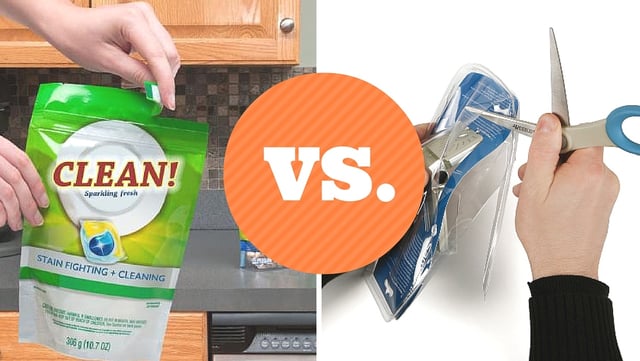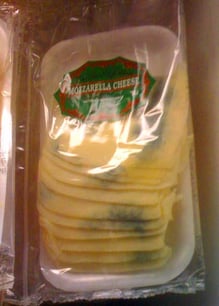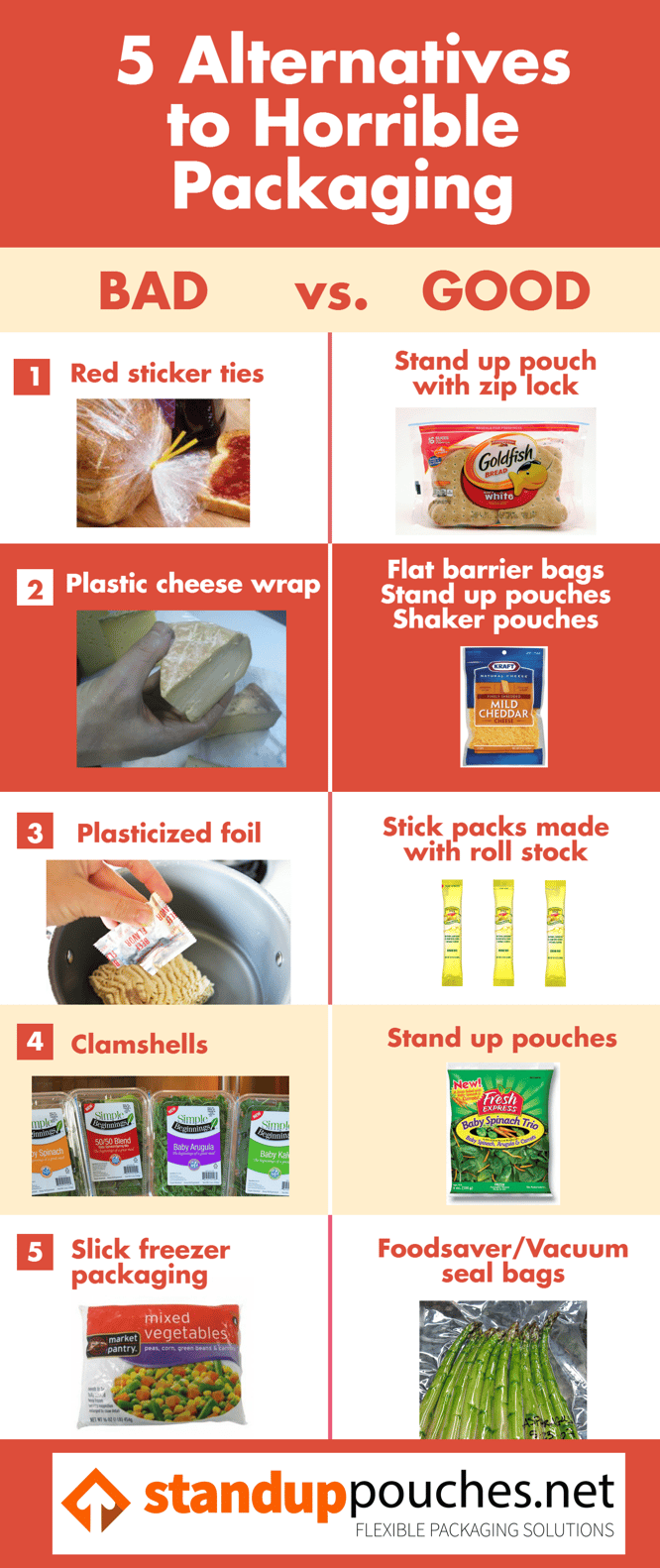
Exciting things are happening in the world of consumer goods – new product development is increasing at a lightning-fast speed, and inventive, fascinating products are reinventing the market in revolutionary ways.
With so much ingenuity floating around in terms of taking goods from concept to creation, it’s still baffling that a large portion of brands are overlooking one crucial detail that can make or break their success. We’re talking about product packaging here – it’s the first thing people see on store shelves when making initial contact with a new item. It’s the outer shield that projects a product from breakage, spoilage, contamination, and other factors that can compromise its quality. It’s an integral form of visual communication that serves as a billboard for a brand that not only advertises the company and product in the store, but continues to promote the goods inside when toted around by the end user. So, then, why do so many companies overlook packaging as a way to build their brands and attract new customers?
It’s not just smaller, newer businesses making this mistake – large corporations often adhere to the “if it ain’t broke, don’t fix it” mentality in terms of their product packaging and labeling. The truth of the matter is that the world of packaging is evolving each and every day, and new innovative product packaging is emerging just as quickly as the products themselves. With the adoption of 3D printing, invisible bar codes, and structural components that are highly protective and good for the environment, it’s often baffling that so many brands still stick to bulky, rigid, flimsy, and unattractive containers to hold their products and draw in consumers.

We came across an article on the humor website Cracked.com, written by Felix Clay, in which he shares his frustrations with old-school packaging styles that are still being used by some of the world’s largest brands. As any consumer knows, not all packaging works to protect the product inside, nor is it always easy to open or use. Hence the rise of the “wrap rage” phenomenon. Bad packaging can be deadly for brands – if people can’t get to your product because of an impossible container, they’ll dismiss your company right away. Additionally, in the 21st century it’s easier than ever before to share your opinions and displeasure with brands and products via social media, blogs, and review sites. A brand’s online presence is highly important, and if people conduct a quick Google search and see nothing but complaints about your product’s poor packaging, your company’s reputation will be tarnished indefinitely.
In his article, “5 Horrible Types of Packaging Clearly Invented by Satan,” Clay outlines five common types of packaging that should fall by the wayside because they are ineffective, frustrating, and unreliable. As a response, we’ve compiled five flexible alternatives to the ineffectual and obsolete types of packaging he, and many other consumers, have expressed their displeasure for.
1. Red Sticker Ties vs. Stand Up PouchLoaves of bread have traditionally been packaged in a thin, clear plastic bag and sealed with either a small, rigid clip or the dreaded sticker tape. The flimsy piece of tape serves one purpose: to hold the ends of the plastic bag together. Because the tape is stuck so firmly to the bag, it is nearly impossible to re-stick, making it an inefficient solution for keeping bread and other products fresh. Additionally, the sticker tape is extremely difficult to separate once it has been stuck, so the end user’s only solution is to cut or rip the plastic bag to get to the product inside. As Clay points out in his article, slicing it open is easy enough, but you’re then left with a hole in the bag that allows air and moisture to enter, rapidly decreasing the freshness of the bread and increasing the chance of mold in a short amount of time.
An alternative to the flimsy plastic and difficult-to-open sticker tie is a stand up pouch. Made with multiple layers of plastic laminated together, this innovative product packaging is significantly more protective and can stand upright on shelves. These pouches can be produced with a zipper-top, along with an easy-open tear notch, making it easy for the consumer to get to the product then reseal while pushing out air, resulting in an extended shelf life for the product. Stand up pouches can be customized in a variety of different shapes and sizes, and they can be made with an all-clear finish, or custom printed with the addition of a transparent window, so brands can show off their product while ensuring it it significantly more protected than it would be with standard plastic wrapping. Stand up pouches work to safeguard delicate food products – like bread – from becoming deformed or broken by outside forces while offering added convenience for the end user.
2. Plasticized Foil Tear-Open Packs vs. Stick Packs
Often used as a common solution for packets of seasoning for ready-to-eat microwavable meals, Clay points out that foil looks shiny and eye-catching, but its functionality is limited for small, powdery products like seasonings and spices. Foil can become easily misshapen, it can crumble, dent, and alter the shape of the product inside. Tiny foil packets often do not feature a tear notch, making the whole purpose of convenient, on-the-go meals moot.
A more effective way to package powdery or granular products like seasonings is a stick pack – made with strong yet pliable layers of plastic, a stick pack maintains its shape and structure and is small and slim enough to fit inside other packages. Stick packs have been embraced by manufacturers of powdered drinks and instant coffee, and we’re seeing sugar and spice companies adopting this form of packaging as an alternative to paper or foil packets. Made with rollstock, these stick packs can be custom printed with safe, water-based inks so mixing instructions, logos, and other informative text can be printed on the outside in bold, vibrant hues. Stick packs can also be made to include easy-open tear notches.
3. Plastic Cheese Wrap vs. Flat Barrier Bags, Stand Up Pouches, or Shaker Pouches
Like the plastic used to package bread, cheese packaging is notoriously flimsy and impossible to re-close. Clear plastic has been used to protect sliced cheese, string cheese, and bricks of various types of cheese for ages, but modern advances in flexible packaging offer a large variety of more protective ways to prolong the freshness and preserve the distinct flavor of cheese in any form. Clay makes a good point that most people don’t eat an entire brick of cheese in one sitting, so a zip-lock seal would make more sense for re-closing the product so consumers can return to and enjoy it again and again. This is where stand up pouchesmake sense, especially for shredded cheese – they are strong but gentle enough to hold in the soft, delicate pieces of cheese and allow the consumer to push air out and keep their food tasting fresh.
Flat barrier bags, on the other hand, serve as the perfect alternative for entire bricks or slices of cheese. This form of packaging doesn’t stand upright on shelves like a stand up pouch does, but it can be produced with the same features that offer convenience and freshness. Tear notches, zip locks, and even hang holes can be added to flat barrier bags, and brands can even custom print the outside of the packaging to help distinguish their cheese products from the rest.
Another interesting advancement in the world of flexible packaging is the shaker pouch – it is made with the same structural components of a stand up pouch and features a handle up top and zip lock on the bottom. This is a great option for packaging grated or finely shredded cheese, as it allows the product to fall through tiny holes in the bottom of the pouch when shaken. It can then be resealed with the zip lock to ensure no product falls through when not being used. Shaker pouches take up less space in a refrigerator than rigid, cylindrical plastic containers and can also lay flat, making them stackable, thus saving space in consumers’ homes.
4. Clamshells vs. Stand Up Pouches
Did you know nearly 6,000 people are hospitalized due to injuries involved with opening clamshell containers? Easily one of the most frustrating and difficult types of packaging, these containers are produced with front and back layers of strong plastic fused together with the intention of securing expensive items – like electronics – and making it difficult for shoplifters to easily open. That should be the first clue that this type of packaging is ineffective for the average consumer – the goal is to keep people out and make it hard to access the product inside. The only way to get this notorious type of packaging open is with sharp scissors or a knife and applied force. When finally broken, the plastic is so tough that dangerous jagged edges poke out due to the now mangled packaging. Not good.
The alternative to this is a stand up pouch – it is less rigid and is much easier to open than a clamshell or other hard containers. Traditionally thought of as packaging for food products like granola or trail mix, many companies are embracing this flexible innovative product packaging for a wide range of consumer goods. They protect fragile and expensive items from coming in contact with water, vapor, dust, or pests while working to keep the product standing upright on shelves. Their light weight and supple structure make the product easy to transport, and adding a zipper closure allows consumers to keep their item stored in the pouch for safekeeping.
5. Slick Freezer Packaging vs. Food Saver/Vacuum Seal Bags
People freeze food for a simple and obvious reason: to have the option of eating it at a later date without worrying about it turning sour or stale after a couple of days. However, the entire concept of keeping food fresher for longer becomes diminished if it is packaged poorly. Freezer burn ruins the food’s flavor and makes it difficult to thaw. Many frozen food companies have ditched the carton-in-a-box concept for opaque plastic bags, especially for loose food products like pre-sliced fruit and vegetables. The problem with this type of packaging, as Clay points out, is that it becomes slippery after an extended stay in the freezer. Stacking these bags becomes a challenge, resulting in a crash or spill every time the freezer door is opened. Additionally, many of these bags cannot be re-sealed, forcing the consumer to either grab an entirely different container to place the food in, or grab a twist tie or other item to seal it with.
The better option for prolonging the freshness of frozen food and saving space in the freezer is a vacuum seal bag. This type of packaging sucks the oxygen out, allowing the bag to lie flat and protect the food inside from becoming misshapen when stacked. Whereas a cardboard box and inner plastic lining result in extraneous waste, Food Saver or vacum seal bags are an innovative product packaging option that is self contained, which is also good for the sake of our earth and its landfills. Whether sitting in the freezer or out on shelves, maintaining the freshness of the product, while offering ease of use to the consumer, is of the utmost importance. Rather than frustrating and alienating their target audience, brands that use high-quality packaging that best reflects their creative, superior products will carry their company into the 21st century and set new standards for entire industries.
In an age of convenience and customization, people expect the products they buy to be tailored to their needs and conducive to their lifestyles. This is why the world of flexible retail packaging is growing and thriving – new scientific developments and extensive testing have made it easier to create new packages that meet consumers’ needs while maintaining the integrity of the product inside.







